#d. sebastião
Photo


El Rei D. Sebastião
João Cutileiro
Lagos/Portugal
photos cjmn
33 notes
·
View notes
Video
youtube
D. Sebastião Estão à Sua Espera - Episódio 2
#youtube#youtuber#humor#paródia#rir#lol#comédia#nemseioquedizem#nem sei o que dizem#rei#reis#portugal#monarquia#d. sebastião#sebastião#o desejado#para rir#podcast#podcasts#podcaster#podcasting
0 notes
Text
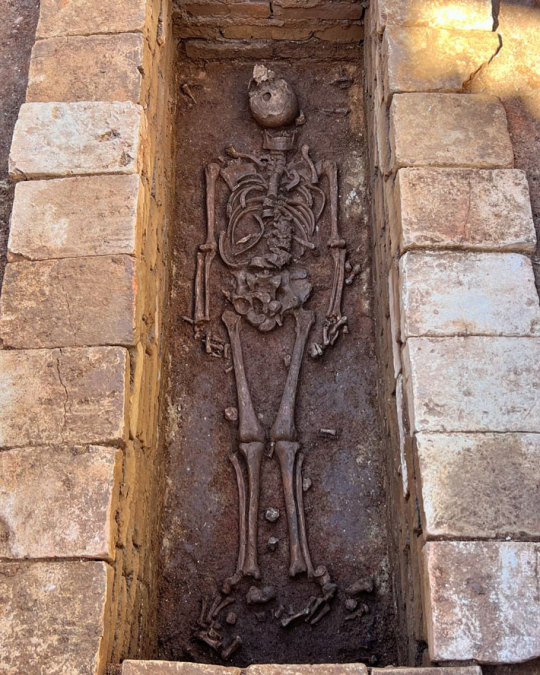
Three Roman Graves Uncovered in Portugal
Three burials dating to the 5th or 6th century AD have been unearthed in the ancient Roman city of Ossónoba in Faro, southern Portugal.
The Ossónoba’s first archaeological evidence dates back to the 4th century B.C., when the Phoenicians settled in the Western Mediterranean. The city was then called Ossónoba From the 2nd century B.C. until the 8th A.D. the city was under Roman and Visigoth dominance being afterwards conquered by the Muslims in 713.
A team of archaeologists from ERA Arqueologia discovered ancient Roman structures and the remains of a man, woman, and child while conducting excavations over a 5,000 square meter area that will eventually house a real estate development.
The excavations, which took place before a construction project, revealed the grave of a man whose skeleton was complete and who would have been between 39 and 45 years old, as well as a young woman under the age of 25, and a baby who would have been no more than six months old, according to archaeologist Francisco Correa.
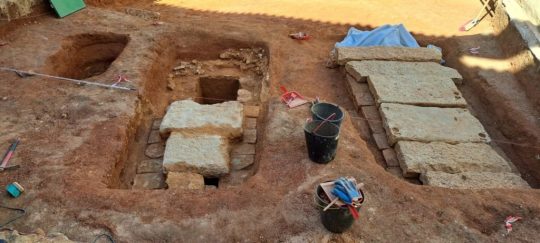
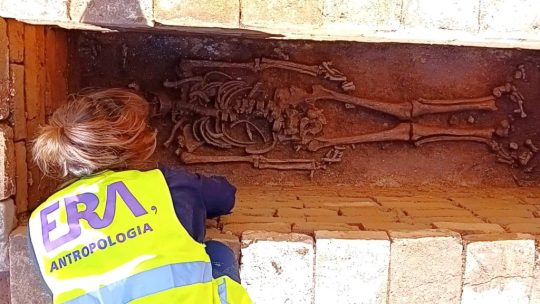

Francisco Correia, the project’s head archaeologist, said in a statement that the discoveries were made in an old truck repair workshop and are believed to date from the 5th or 6th century.
The tombs appear to have been looted in the past to steal “small bracelets, necklaces, and rings,” according to anthropologist Cláudia Maio. The tombs indicate that the people may have had “some economic status” as they were not simply placed in open graves but instead buried in carefully built graves.
The proximity of the three people’s graves seems to indicate that they were family members, though the team cannot be certain of that. “But we cannot say anything for sure,” the anthropologist said.
To learn more, the researchers hope to be able to provide more precise answers through DNA tests and isotopic analysis techniques used to determine population movements and dietary habits from chemical traces in ancient human remains.
This latest archaeological discovery did not come as a surprise to archaeologists, who had already led similar works which resulted in the discovery of a Roman game artifact believed to date back to the first century AD in 2020.

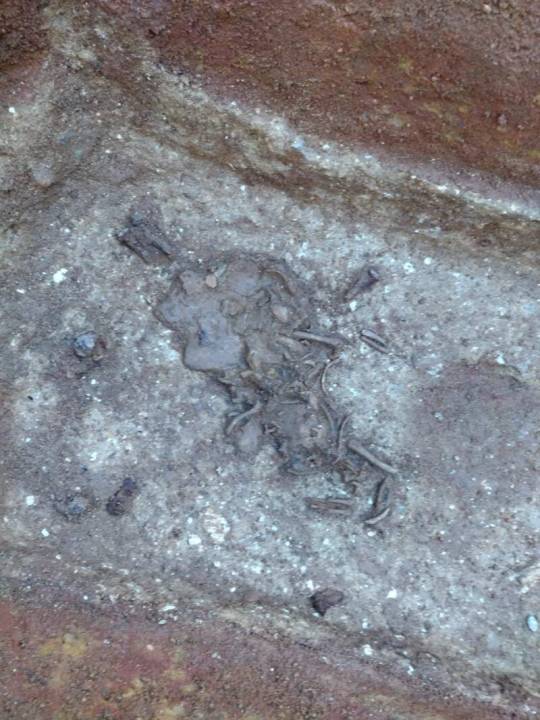

“We know that we are in an area with archaeological potential where there is a 17th-century convent (of Santo António dos Capuchos) to the west, and to the east lies the area where the mosaic of the Ocean God (Deus Oceano), now a national treasure, was found,” he said.
What did come as a surprise to archaeologists was the location of the tombs.
“Based on previous studies, this would have been an area that was possibly residential or more linked to industrial activities. There are many traces of salterns. Largo da Madalena would have been the entrance to the urban area of the city of Ossónoba. The identified graves are in the Figuras area, near Teatro Lethes, close to the Ermida de São Sebastião and the Pavilion of Escola D. Afonso III. This area is almost within the urban fabric,” the archaeologist explained, adding that this illustrates both the “growth and decline of Ossónoba.”
The graves of the man and the woman “were sealed with limestone slabs,” believed to be reused parts from “some of the most emblematic buildings that would have been here in the area,” he believes.
According to the project manager of ERA Arqueologia, who was co-responsible for the work, in addition to the graves, hundreds of small pieces were also discovered which suggest that there may also have been a mosaic there.
The researchers also recovered Roman artifacts in the area, including ceramics, bone dice, nails, pins, a spoon, possible evidence of a dye factory, and coins minted during the reign of Constantine the Great, between A.D. 306 and 337.
Cover Photo: Roman mosaic of the god Oceanus, part of the ancient city of Ossónoba, the modern town of Faro, in Portugal.
By Leman Altuntaş.
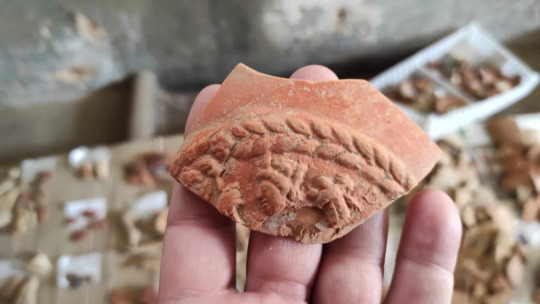

#Three Roman Graves Uncovered in Portugal#Roman city of Ossónoba in Faro#ancient grave#ancient tomb#ancient artifacts#archeology#archeolgst#history#history news#ancient history#ancient culture#ancient civilizations#roman history#roman empire#roman art
110 notes
·
View notes
Text
4 portuguese monarchs who might had same-sex relationships:
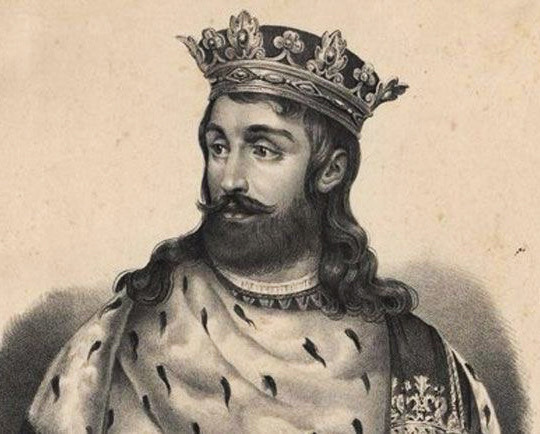
1) Pedro I of of Portugal, certainly, one if the most renowned portuguese monarchs, largely due to the saga of “love and passion” with Inês de Castro. Yet, it was common knowledge that she wasn't the Pedro’s only love: he harboured a passion for his squire, Afonso Moreira, a relationship that ended as disastrously as his other romantic (or not) entanglements. On one fateful occasion, Afonso was caught in bed with Catarina Tosse, wife of Lourenço Gonçalves, who was an esteemed magistrate.
Throughout his reign, Pedro earned the epithet “the Cruel” for his ruthless administration of justice, whereby transgressions of any magnitude often resulted in swift execution. Pedro’s decision to order Afonso’s castration as punishment for his adultery starkly manifested his merciless ethos. Nevertheless, according to Fernão Lopes, a chronicler of portuguese court at the time, in chapter VIII of “Crônica de el-rei D. Pedro I”, his harshness stemmed from a surge of jealousy on the king’s part upon discovering his beloved squire’s relationship with a woman.
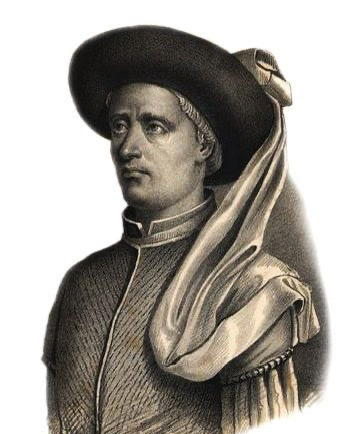
2) Prince Henry, revered as “the Navigator”, occupies a central role particularly during the epoch of maritime exploration.
He was hailed as “chaste prince”, having never entered into wedlock, with no historical accounts suggesting (with certainty) any relationships with women. In the annals of 1444, Henry experienced the loss of a “dear friend” in Ceuta, a tragedy that pluged him into 3 months of profound mourning. Both his father, King John I, and his brother, King Edward, counselled him to “rein in his emotions, lest he indulge men beyond what virtue dictates.”
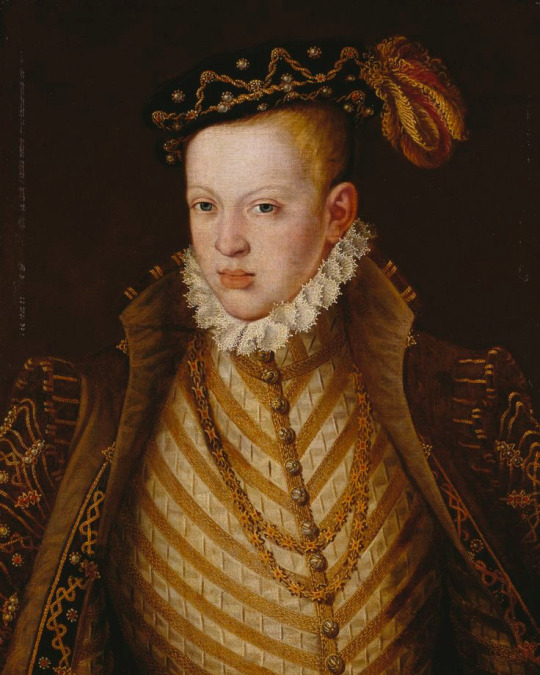
3) King Sebastian contracted gonorrhoea at the age 10/11, a malady documented in medical records at the time that rendered him sexually impotent. Some historians posit that this affliction may have dissuaded Sebastian from pursuing matrimonial unions or romantic relationships with women.
Even though, the “Crônicas de el-rei D. Sebastião” by Friar Bernardo da Cruz recounts an incident during a hunt in the Alentejo, where the entourage of nobles accompanying King Sebastian were stirred by a commotion. Investigating the disturbance, they stumbled upon the monarch locked in an embrance with a fugitive slave amidst the woodland.

4) King Afonso VI, sibling to Queen Catarina of Braganza, earned a reputation for rebeliouness and unruliness from a tender age, yet he harboured no ambitions for kingship.
His reign , marred by a series of missteps, was etched in history for its futile ventures. Despite grappling with severe health afflictions — such as partial paralysis stemming from hemiplegic fever, and scourge of bulimia — Afonso found solace in nocturnal escapades with his inner circle of friends. Among them was António Conti, an intalian peddler of opulent attire and accoutrements to Europe’s nobility. Conti’s sway in Afonso’s court burgeoned as he assumed the role of sartorial advisor and facilitator of introductions to foreign luminaries. Also, both grew increasingly closer to esch other, with Afonso avoiding royal gatherings to spend time with Conti, mostly in his chambers.
In 1666, Afonso took the hand of Maria Francisca Isabel of Savoy, yet their union was fleeting. Maria, citing non-consummation owing to Afonso’s hemiplegia, sought an annulment. In letters to his sister, he bemoaned Maria’s coercive measures, by which she compelled him into relationships with 14 courtesants in a bid to unearth the root of their marital discord.
Seeking to shield Afonso’s sovereignty and secure the portuguese lineage, Luisa de Gusmão, his mother, sanctioned the arrest and subsequent exile of Conti to the distant shores of Brazil.
#i am sorry for how long it is#but i really wanted to post it#so there you have#theres other monarchs to talk about#but these are the ones with the most evidences#pedro i of portugal#prince henry#king sebastian#afonso vi of portugal#historical facts#portugal
13 notes
·
View notes
Note
Já vos disse aqui no tumblr que a minha professora de história pertence a um grupo de historiadores que acreditava de D. Sebastião era gay? Não do tipo "sou gay porque gosto de homens" mas mais pela Grécia Antiga tipo "sou gay porque odeio mulheres", porque quando ele era pequeno foi abusado por monjas, e a partir dai nunca mais gostou de mulheres, e dai sempre ter recusado casar nem teve casos com nenhuma
estou a ver que nao conhecem a historia do javali
25 notes
·
View notes
Text

''Livro das escrituras da Ordem de Nosso Senhor Jesus Cristo mandado fazer por D. Sebastião ao Dr. Pedro Álvares do seu desembargo e cavaleiro professo da Ordem de Cristo [Military Order of Christ (Portugal), former order of Knights Templar]'', 1560-1568, Ordem de Cristo e Convento de Tomar, liv. 235.
© Arquivo Nacional da Torre do Tombo (ANTT)
19 notes
·
View notes
Text

Armando Filipe da Costa Amaro, A Indústria Conserveira na Construção da Malha Urbana no Algarve, Vila Real de Santo António, Algarve, Portugal
No século XVIII, durante o reinado de D. José I, foi construída por ordem de Sebastião José de Carvalho e Melo – Marquês de Pombal –, Vila Real de Santo António, na margem portuguesa do Rio Guadiana.
Com o objetivo de tornar a região algarvia mais rentável e controlar o contrabando, que se verificava junto à fronteira com Espanha, o Marquês comanda ao Governador do Algarve, em 17 de dezembro 1773, que desenvolva um plano para uma vila de traçado regular, com a pretensão de explorar os recursos naturais de Monto Gordo, então uma vila de cabanas ocupada por Espanhóis. Contudo, o local escolhido para erguer a nova vila foi junto às ruínas de Santo António de Arenilha, a antiga povoação que existiu entre o século XVI e XVII, junto à margem do Guadiana, que apesar do seu despovoamento durante a guerra da restauração, conservou os seus poderes institucionais, com a movimentação da sua população para as localidades mais próximas, nunca deixando de existir.
Ali estariam reunidas as melhores condições para construir uma vila regular, com terrenos propícios ao cultivo, fácil acesso a água potável e, ainda, protegida da subida das águas. Assim, os poderes de concelho e município da povoação de Arenilha foram herdados por Vila Real de Santo António (Correia, 1997, p.69; Pessanha, 2014, p. 77-88).
https://conservasdeportugal.com/a-industria-conserveira-na-construcao-da-malha-urbana-no-algarve-das-estruturas-produtivas-a-habitacao-operaria-1900-1960-5/
#Portugal#Património#Algarve#Armando Filipe da Costa Amaro#Museu Digital da Indústria Conserveira#Vila Real de Santo António
3 notes
·
View notes
Text
10 songs, 10 people
put your music on shuffle and list the first ten songs that come up, then tag ten people (thanku for the tag @arktwend !! i like these lil games :’D)
Doubt It - The Amazons
Doomsday - Globus
No Second Chance - Blackmore’s Night
Fields of Verdun - Apocalyptica
Twa Corbies - Ayreheart
Paranoia - Koethe
Blood and Whiskey - The Mechanisms
Turn Back, O Man - Morgan James, Godspell Cast
Rumors - Poets of the Fall
Cantiga da Burra - Sebastião Antunes & Quadrilha, Galandum Galundaina, Luis Peixoto
i do not have 10 people to tag !! but mutuals i am Looking at u owo
#specifically looking at rime n rust bc i know u are little freaks for music u3u#ty again for the tag mr sefiros mr arktwend !!#smh my music is all over the place#tinta talks
2 notes
·
View notes
Text
olá lindux. tá tudo bem?
estou a retornar dos mortos (corporate hell) para relembrar que o dia e noite dos museus está a chegar e que se Deus quiser eu pessoalmente vou estar a beber jolas e abanar o capacete no terraço do MNAA com uma montagem do D. Sebastião seminu com um sixpack a pairar sobre mim.
anyway, podem ver o programa aqui: https://w3.patrimoniocultural.pt/museus2023/digital/index.php
está uma merda e ainda em atualização, mas é o que temos.
vocês andam bem? espero que sim. se quiserem mandem-me asks a fazer updates da vossa vida que tenho saudades de ouvir sobre os vossos dias.
4 notes
·
View notes
Video
youtube
D. Sebastião Estão à Sua Espera - Episódio 1
#youtube#youtuber#podcast#podcasts#podcasting#podcaster#humor#comédia#rir#lol#paródia#d. sebastião#portugal#portugueses#nemseioquedizem#nem sei o que dizem
0 notes
Video
Santuário de Nossa Senhora dos Remédios - Lamego - Portugal 🇵🇹 by Vitor Oliveira
Via Flickr:
Restaurada a diocese no século XI, Lamego possuiu uma sé edificada no reinado de Afonso Henriques da qual nada resta. Da obra medieva sobra a torre lateral, do séc. XIII ou XIV, pois o templo foi reconstruído na transição do século XV para XVI. A fachada principal, obra do mestre João Lopes (1508-1515), é do gótico final. O interior foi renovado no séc. XVIII. O claustro apresenta belas arcadas renascentistas. O bispado de Lamego está documentado desde muito cedo na História do Cristianismo peninsular, datando a primeira referência de 572, ano em que o bispo Sardinário esteve presente no II Concílio de Braga. O edifício que hoje conhecemos começou a ser construído nos meados do século XII, por patrocínio parcelar de D. Afonso Henriques, sobre uma antiga capela dedicada a São Sebastião, esta mandada edificar pela condessa D. Teresa algumas décadas antes. Do período românico resta a monumental torre que flanqueia a fachada principal pelo lado Sul. De secção quadrangular, dispõe-se em três andares sobre forte embasamento, constituindo o último uma reconstrução mais recente do monumento original. Ao nível dos elementos divisores destacam-se as frestas de arco apontado do primeiro andar (como se de uma obra de arquitectura militar se tratasse) e as elegantes janelas de arco a pleno centro, de duas arquivoltas, do segundo andar. Estas são decoradas com meias-esferas e capitéis vegetalistas, circunstâncias que permitem atribuir uma datação algo tardia para o projecto, provavelmente já a rondar a viragem para o século XIII, tendo em conta que a obra, iniciada pela cabeceira, demorou ainda algum tempo a chegar à face ocidental e, consequentemente, às torres. Ler mais Durante a Baixa Idade Média, o conjunto edificado nas primeiras décadas da monarquia foi enriquecido com numerosos elementos, entre os quais algumas capelas funerárias, particularmente de membros do episcopado – casos de D. Paio, que instituiu a capela de São Sebastião em 1246; D. Domingos Pais, a quem se ficou a dever a Capela de Santa Margarida, em 1284; Nicolau Peres, deão, que patrocinou a Capela de Santa Marinha em 1299; ou D. Vasco Martins, que decidiu edificar a Capela de Santa Maria do Tesouro em 1302, entre muitos outros exemplos que poderíamos citar. Nos inícios do século XVI, o monumento foi objeto de uma importante reforma. O arranque dos trabalhos anda atribuído ao bispo D. João de Madureira, que entrou na cátedra em 1502 e o resultado foi a principal obra manuelina deste sector do reino, reservada à fachada principal, elemento primordial de cenografia e de impacto visual a todos quantos se aproximavam da catedral. Os três panos da frontaria, que denunciam o interior em três naves, passaram a conter uma tripla entrada harmónica, composta por portais de arco apontado (o axial inscrito em seis arquivoltas e os laterais em três), profusamente decorados com capitéis vegetalistas de secção oitavada e intercolúnio preenchido com motivos fitomórficos. As pilastras que dividem os panos são reforçadas por contrafortes rematados com cogulhos e, ao nível do segundo andar do corpo central rasga-se um grande janelão de arco abatido, inscrito em moldura rectangular, que se instituiu como verdadeira marca de estilo do projeto. Na Idade Moderna, o conjunto catedralício foi aumentado e enriquecido com outras obras, como o claustro (do período maneirista) e a nova capela-mor (barroca, bastante profunda e revestida por retábulo-mor, dois órgãos e tribunas, construída a partir de 1742). O transepto é igualmente barroco e foi realizado imediatamente após a conclusão da capela-mor, decorrendo os trabalhos até 1771. Por essa mesma altura dava-se corpo à sacristia e aos vários retábulos que ornamentam ainda a maioria das capelas devocionais do interior. Adaptado de: IPPAR /IGESPAR www.culturanorte.gov.pt/patrimonio/se-de-lamego/
4 notes
·
View notes
Text
Last month I bought The Saving of an Empire: Transfer of Portugal's Court and Capital to Brazil, 1808 by Kenneth Light at a really good price. I finished reading it this afternoon and thought I’d share some of the more interesting excerpts with you all.
Just as the title says, the book is about the Portuguese royal family’s escape from Lisbon to Rio de Janeiro under the threat of Napoleon’s advancing army in 1807. It wasn’t until 1821 that D. João VI returned to Portugal. Although the book focuses mostly on the royal family’s trans-Atlantic journey, it also gives small glimpses into the situation back home.
1. Napoleon’s failed cat-and-mouse game

The Portuguese royal family set sail for Brazil on the 29th of November 1807, one day before the French army entered Lisbon.
2. That time when the royals accidentally started a new trend en route to Brazil
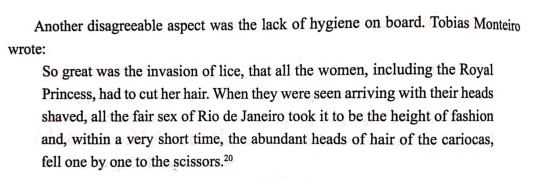
3. "Junot, go home.”

4. The Russians always turn up when you least expect them

I thought that only happened here.
5. How sailors used to measure latitudes and longitudes

The author uses so many nautical terms. It was hard to follow at times, but I really enjoyed this part. He wrote that even after the introduction of the chronometer, sailors continued to use the older method.
6.” Hooray for D. Sebastião King of Portugal”

This was my favorite part. Even after so many years, the Portuguese were still waiting for his return. That egg must have given them so much hope.
#The Saving of an Empire: Transfer of Portugal's Court and Capital to Brazil 1808#Kenneth Light#portugal#portuguese history#João VI of Portugal#napoleon bonaparte#no but really that encounter with the Russian ships was...the single most random event ever#I wonder what happened to the egg#my entries
4 notes
·
View notes
Text
OneShot: Lil’ body, Big dreams, Bigger self doubt

In the bustling streets of Brazil, a young lady walks out of the mall carrying a bag filled with groceries. There is a light skip in her steps and her sandals click against the ground as she does so. The band aid on her leg is almost coming off but that's something she can fix later, she thinks to herself. She's walking to the parking lot when she sees a small kid getting bullied by 2 teenagers.
“Please, I don’t have any more money!” the kid cried out as the taller lads were intimidating him by size.
“Oh really? Then we’ll just take the stuff you have on you right now!”
"HEY!" the lady shouts alerting the thugs of her presence. They freeze for a moment before turning around. Upon laying their eyes on her however they start laughing.
"What's with this shortie?" The taller of the bunch asks, wiping a tear from his eye.
She simply stares them off. "Let him go." She says.
They thugs at one another and starts howling in laughter again.
"Let him go she said!" One of them shouts, mocking her, and another inches closer.
"What are you? A wannabe hero? You already have a band-aid but it seems like you're itching to get more!"
“As a matter of fact, yes! I registered for an EVF examination a few days ago” she said, puffing up her chest up and smiling confidently
“Oh? Well that’s great, that means we can get rid of a hero before they even become one” the taller guy said, and both of them get into a fighting stance
Peixinha looks at them, eyes now open, still smiling but exuding an aura of confidence
“Well, you can try” as she gets into a capoeira stance
The shorter guy runs and throws a punch, but Peixinha ducks. Using her hand to stand, she kicked the guy hard in the stomach, causing him to be knocked back.
“D-damn you!” the tall lad charged in now, and he threw a punch only to be countered by…
“What is this, you got an ability?” he says in confusion
What he saw is a holographic version of his hand clashing with his real hand, causing the strike to stop abruptly, and that’s when he sees the Lil lady's eyes glow, the right glows an X and the other II.
The lass used this distraction to wind up a kick, with the same aura coating her foot like the hand a few seconds ago. Before the guy noticed it, he got uppercut by the powered-up kick with a loud ‘WHAM!’, knocking the guy off a bit from the ground, and back down.
She recovered, with a hand covering her left eye in pain, but she smiled, but then she turned around to see the other guy holding the kid, with a knife in one hand
‘Merda!’ the orange fishy fella curses in her mind
"SCREW YOU!!! Don't think no one will get away from here unscathed!"
‘nonononononononono’ panic invaded her mind at that moment, and her body seemingly froze as she could only watch.
Suddenly, a wave of air knocked the dude’s knife away. Everyone looked in the direction the wind is from and that’s when they saw a man with an unbelievably hot build, and a body that looks like a greek sculpture, but with modern fitness and not too much muscle, enough for him to be a daddy. His scars decorated his body like gravy on a 5-star steak, the hair that adorned his head is magnificent, it was smooth and almost silky. His pink tail, although most cannot pull a handsome look with it, he sure can cuz he’s him.
“There’s no way, you-r-re Sebastião, lenda da dança?!!”
“Correct, now please, leave the kid and my daughter alone won’t ya?”
“Let's run bro!” they quickly ran away from the scene
The kid after being let go immediately runs to the man with the lustrous hair that’s lust-invoking
“Thank you so much, I can’t believe I got saved by the legend himself!”
“Better believe it kiddo, what matters is are you hurt or did you lose anything to them?” he kneeled talking to the kid
The kid and Sebastião talked, meanwhile Peixinha is frowning and thought to herself
'I wasn't paying attention. That kid nearly got hurt… what if Papi wasn't there… I'm still not good enough.'
Her thoughts are interrupted by the kid walking up to her, to which she notices and looks away
“Thank you so much, miss! You looked so cool doing all those moves!” the kid said with a huge smile on his face
“O-oh, uh thanks!” she awkwardly smiled as she didn’t expect this to come out of his mouth. She’s still surprised as the kid walks away
“So kiddo, did ya kick ass this time around?” Her dad pats her back and her focus returned
“Kinda Papi, I got them and they didn’t even land one hit but as you did see…” she looks down at the ground sheepishly
Her head gets rubbed(patted) lovingly as they turned around to go to their vehicle
“Don’t sweat it, sweet orange of mine! There’ll be way more chances to succeed!” He laughs it off as they enter the car(Ford Troller T4).
Later
They arrive home and move the groceries to the dojo/house, and as she puts the groceries on counter she ponders
‘I failed today, worse than last time even’ as she caressed the plaster on her cheek
She reminisces the earlier events and she can't help but feel perplexed. Suddenly, the kid's voice rings in her head once again.
‘Thank you so much, miss! You looked so cool doing all those moves!’
And she can't help but smile.
‘Thank you so much, miss! You looked so cool doing all those moves!’ after remembering that she smiled
‘How’d I forget, I’m doing this because I love saving people’ she nods to herself as she took a deep breath, and then raised her arms high
“Alright, I’m gonna do it, I’m going to become a great hero!” she has a determined look and a smile on her face
Behind the balcony and beside the door her pet snake and her father are there, he sips a watermelon juice looking at her, a bit amused but also relieved that his girl is back to being happy again.
As the Sun went down, a Lil hero rises.
2 notes
·
View notes
Note
AU em que o D. Sebastião usou a conquista de ceuta para fugir com o namorado
E grande AU que a conquista de Ceuta foi quase um século antes dele nascer
9 notes
·
View notes
Note
1, 8 e 13 para o ask game :))))
1: What color are your socks?
Fuzzy socks! A mix of grey and aqua
8. já respondi eheh
13: What’s your favorite urban legend?
D, Sebastião coming back num dia de nevoeiro OR BACCHUS HATING THE PORTUGUESE BECAUSE WE DRINK MORE WINE THAN HIM, THE LITERAL GOD OF WINE AJDKJAKL
Niche português mesmo, obrigado <3
4 notes
·
View notes
Text
DIA 25 DE ABRIL DE 2024 : COMOVIDO COM O MUSEU ABEL MANTA EM GOUVEIA : comoveu-me o encontro com o museu dedicado a meu tio. !O imponente edifício do século XVIII foi mandado construir pelos primeiros senhores da Casa do Toural, . Já no século XX, o solar pertenceu aos Condes de Vinhó e Almedina cuja mulher, D. Luísa Guimarães Guedes foi a grande impulsionadora dos estudos de Abel Manta em Lisboa. Em 1981, o Município de Gouveia adquiriu o edifício onde instalou a Biblioteca Municipal e um Museu de temática geral. Em 1983, foi o local escolhido para a exposição retrospectiva da obra de Abel Manta, homenagem ao pintor gouveense, falecido no ano anterior. Esta exposição iniciou o processo que viria a culminar com a constituição de um Museu Municipal dedicado à arte moderna.O Museu Municipal de Arte Moderna abriu a 17 de fevereiro de 1985.:. A coleção do Museu foi constituída a partir da doação efetuada, em 1985, pelo filho de Abel Manta,o arquiteto, pintor e artistas gráfico João Abel Manta.. O núcleo central da coleção é composto por peças de notáveis artistas plásticos do século XX português – dos primeiros modernistas aos anos 80 . Outros nomes representados são Clementina Moura e João Abel Manta, Sara Afonso, Dórdio Gomes, Mª Helena Vieira da Silva, António Duarte, Carlos Botelho, Bernardo Marques, Fred Kradolfer, Manuel Mendes, José Dias Coelho, João Hogan, Joaquim Rodrigo, Luís Dourdil, Maria Keil, Mário Dionísio, Rolando Sá Nogueira, Júlio Pomar, Júlio Resende, António Dacosta, Jorge Vieira, Querubim Lapa, Menez, Lagoa Henriques, Marcelino Vespeira, António Charrua, Lima de Freitas, Carlos Calvet, Sebastião Rodrigues, Rogério Ribeiro, Lurdes Castro, Nikias Skapinakis, Bartolomeu Cid dos Santos, Hilário e Gil Teixeira Lopes, António Costa Pinheiro, Maria Velez, René Bértholo, José de Guimarães, Manuel Baptista, Espiga Pinto, António Sena, Paula Rego, Fernando Conduto, Victor Fortes,António Palolo, Zulmiro de Carvalho.Senti de forma cruel a falta da Zaza . Ela era adorada pelos Mantas e foi pintada por meu tio quando me mobilizaram para a guerra do Ultramar .

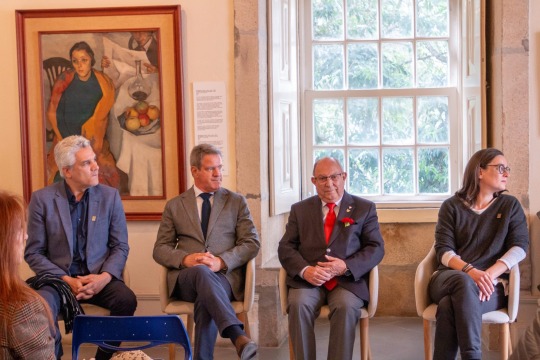


0 notes